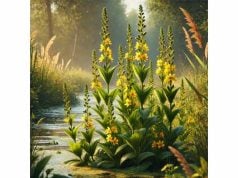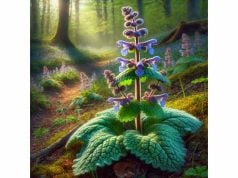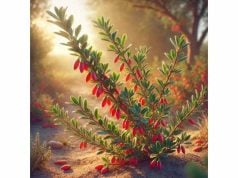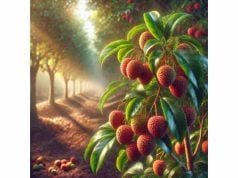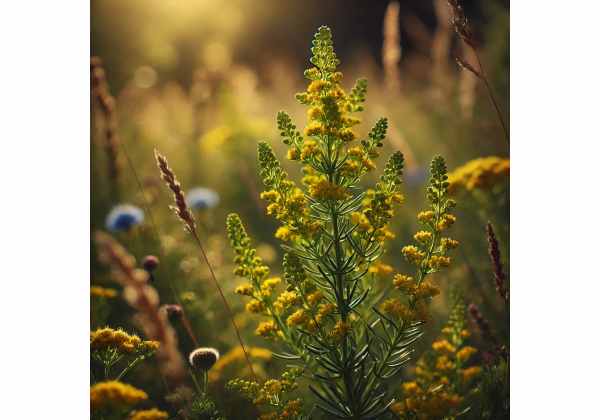
Lady’s Bedstraw is a time-honored herb celebrated for its diverse therapeutic applications and rich profile of bioactive compounds. Traditionally used for its diuretic, anti-inflammatory, and digestive benefits, this herb also exhibits notable antioxidant and antimicrobial properties. Its active ingredients—including iridoid glycosides, flavonoids, coumarins, tannins, and phenolic acids—contribute to a range of healing effects. Lady’s Bedstraw has been incorporated into teas, tinctures, and topical formulations, making it a versatile choice for natural wellness. In this comprehensive analysis, we delve into its botanical features, phytochemical composition, medicinal benefits, practical uses, supporting research, and frequently asked questions.
Table of Contents
- Botanical Overview and Distinctive Features
- Phytochemical Analysis and Active Ingredients
- Medicinal Benefits and Fundamental Attributes
- Usage Insights and Safety Measures
- Research Trends and Key Scientific Discoveries
- Common Queries and Answers
Botanical Overview and Distinctive Features
Lady’s Bedstraw (commonly associated with species in the Galium genus) is a perennial herb belonging to the Rubiaceae family. Renowned for its vibrant yellow to cream-colored blooms and finely whorled leaves, this herb grows in a variety of temperate habitats—from grassy meadows and open woodlands to the banks of streams. Its slender, erect stems support clusters of star-shaped flowers, and the leaves are typically lanceolate with a slightly serrated edge, creating a delicate, lacy appearance.
Native primarily to Europe, Lady’s Bedstraw has naturally expanded its range into parts of Asia and North America, adapting well to various soil types—especially well-drained, calcareous soils rich in minerals. This adaptability and resilience have made it a favorite in wildflower meadows and naturalized gardens alike. The plant’s reproductive strategy is predominantly via seeds, though it also propagates through root systems, ensuring its persistence across seasons.
Historically, Lady’s Bedstraw has been admired not only for its ornamental value but also for its practical applications in traditional medicine. Herbal practitioners have long utilized its mildly astringent and diuretic properties to address ailments such as urinary tract disorders, digestive discomfort, and inflammatory conditions. Its ethereal beauty—characterized by clusters of petite flowers and an overall graceful form—has also rendered it a symbol of natural simplicity and enduring charm.
The distinctive features of Lady’s Bedstraw extend beyond its aesthetic appeal. Its capacity to thrive in nutrient-poor environments speaks to a robust metabolic system that synthesizes a suite of secondary metabolites. These compounds, which include iridoid glycosides and flavonoids, not only aid in the plant’s defense against herbivores and pathogens but also provide a therapeutic foundation for its medicinal uses. Moreover, the plant’s ecological role is significant; it contributes to soil stabilization and offers habitat to a range of insects and small wildlife, thereby supporting local biodiversity.
Modern botanists continue to study Lady’s Bedstraw to better understand its growth patterns and adaptive mechanisms. Detailed examinations of its cellular structure have revealed unique adaptations that enable efficient nutrient absorption and resilience in fluctuating climates. This scientific inquiry reinforces the herb’s dual identity as both a decorative plant and a valuable medicinal resource. Its integration into sustainable landscaping and conservation efforts further underscores the importance of preserving its natural habitats. Overall, the botanical overview of Lady’s Bedstraw highlights its multifaceted significance in both ecological and medicinal contexts.
Phytochemical Analysis and Active Ingredients
The therapeutic potential of Lady’s Bedstraw is deeply rooted in its complex phytochemical composition. Through advanced analytical techniques, researchers have identified several key active compounds that work synergistically to produce a wide range of health benefits. Below is an in-depth look at the principal bioactive constituents found in this herb:
- Iridoid Glycosides
Iridoid glycosides such as asperuloside are prominent in Lady’s Bedstraw. These compounds are known for their anti-inflammatory and hepatoprotective properties. They help modulate the immune response and reduce oxidative stress by scavenging free radicals. Their molecular structure also aids in cell signaling pathways that contribute to tissue repair and regeneration. The presence of these glycosides is believed to underlie many of the herb’s traditional uses in alleviating digestive and inflammatory disorders. - Flavonoids
Flavonoids are polyphenolic compounds that play a crucial role in the antioxidant defense system of the body. In Lady’s Bedstraw, compounds such as quercetin and kaempferol have been identified, which help mitigate oxidative damage and reduce the risk of chronic diseases. These flavonoids exert anti-inflammatory effects by inhibiting enzymes that promote inflammation, and they also support cardiovascular health by improving blood vessel function. Their synergistic interaction with other bioactive compounds further enhances the overall efficacy of the herb. - Coumarins
Naturally occurring coumarins are present in Lady’s Bedstraw and contribute to its medicinal profile by offering mild anticoagulant and anti-inflammatory effects. Coumarins aid in improving blood circulation and may help prevent the formation of blood clots. Their presence also imparts a subtle aroma to the herb, which has been utilized in traditional remedies for enhancing relaxation and reducing stress. These compounds can interact with cellular receptors, further influencing anti-inflammatory and analgesic pathways. - Tannins
Tannins are a class of astringent compounds known for their ability to contract tissues and reduce secretions. In Lady’s Bedstraw, tannins contribute to its astringent and antimicrobial properties, making it useful for treating minor wounds and infections. By precipitating proteins, tannins create a protective layer on mucosal surfaces, which can help reduce irritation and promote healing. Their natural preservative qualities also make the herb a valuable addition to formulations aimed at prolonging shelf-life. - Phenolic Acids
Phenolic acids such as caffeic acid and ferulic acid are vital contributors to the herb’s antioxidant capacity. These compounds neutralize free radicals and support detoxification pathways in the liver. They also exhibit anti-inflammatory and antimicrobial properties, which can help in managing infections and reducing cellular damage. The phenolic acids in Lady’s Bedstraw are integral to its overall bioactivity, providing a chemical basis for many of its health-promoting effects.
The intricate balance among these compounds not only defines the unique chemical profile of Lady’s Bedstraw but also underscores its potential as a multi-targeted herbal remedy. Their collective actions provide a broad spectrum of biological activities, from modulating immune responses to protecting against oxidative stress. Researchers continue to explore how these bioactive ingredients interact at the molecular level, aiming to unlock further therapeutic applications. As analytical methods evolve, new insights into the phytochemistry of Lady’s Bedstraw are expected to emerge, further validating its traditional use and encouraging its integration into modern herbal medicine.
Medicinal Benefits and Fundamental Attributes
Lady’s Bedstraw has long been revered in traditional medicine for its wide-ranging therapeutic properties. Its rich blend of active compounds contributes to numerous health benefits, making it a versatile remedy for modern wellness. Here are some of the most notable medicinal benefits and fundamental attributes of this herb:
- Diuretic and Urinary Health Support:
One of the hallmark properties of Lady’s Bedstraw is its natural diuretic effect. By promoting increased urine production, the herb assists in flushing out toxins and excess fluids from the body. This can be particularly beneficial for managing conditions such as urinary tract infections, kidney stones, and edema. The diuretic action also supports the body’s natural detoxification processes, helping to maintain a healthy urinary system. - Anti-Inflammatory Action:
The presence of iridoid glycosides, flavonoids, and coumarins endows Lady’s Bedstraw with potent anti-inflammatory properties. These compounds work together to inhibit inflammatory mediators, reduce swelling, and alleviate pain associated with chronic inflammatory conditions. This makes the herb a valuable adjunct in the management of arthritis, muscle strains, and other inflammatory disorders. - Antioxidant Protection:
Free radicals and oxidative stress play a significant role in the development of chronic diseases. Lady’s Bedstraw is rich in antioxidants such as flavonoids and phenolic acids, which help neutralize these harmful molecules. By reducing oxidative stress, the herb not only supports overall cellular health but also helps in the prevention of cardiovascular diseases and other oxidative stress-related conditions. - Digestive and Gastrointestinal Benefits:
Traditional herbal practices have utilized Lady’s Bedstraw to ease digestive discomfort and promote gastrointestinal health. Its mild astringent properties, combined with its ability to stimulate bile production, contribute to improved digestion and nutrient absorption. The herb may help relieve symptoms of indigestion, bloating, and mild gastrointestinal inflammation, providing gentle support for the digestive system. - Immune System Modulation:
The synergistic effect of Lady’s Bedstraw’s active compounds can help balance and boost the immune system. By modulating immune cell activity and reducing chronic low-grade inflammation, the herb supports the body’s natural defense mechanisms. This immune-enhancing quality is particularly valuable during seasonal changes and periods of stress, helping to reduce the risk of infections and promote overall wellness. - Skin and Wound Healing:
When applied topically, Lady’s Bedstraw exhibits properties that promote skin regeneration and wound healing. Its antimicrobial and anti-inflammatory actions can help soothe minor cuts, abrasions, and skin irritations. Traditional formulations often include infusions or extracts of the herb to reduce redness and accelerate the healing process, making it a natural option for skin care and minor dermatological concerns. - Cardiovascular Health:
The antioxidant and anti-inflammatory properties of Lady’s Bedstraw also extend to cardiovascular benefits. By reducing oxidative stress and supporting vascular function, the herb may contribute to maintaining healthy blood pressure levels and improving overall circulatory health. This, in turn, helps reduce the risk factors associated with heart disease.
The comprehensive medicinal profile of Lady’s Bedstraw illustrates its role as a multi-faceted herbal remedy. Its ability to target several physiological systems simultaneously—ranging from the urinary tract and digestive system to the skin and cardiovascular system—demonstrates the herb’s versatility. Whether used as a tea, tincture, or topical application, Lady’s Bedstraw offers a natural alternative for those seeking to enhance their overall health without relying solely on synthetic pharmaceuticals.
Furthermore, its long history of use in traditional medicine lends credence to its safety and efficacy. Modern studies are increasingly validating these traditional claims, revealing that the bioactive compounds in Lady’s Bedstraw can indeed exert measurable therapeutic effects. As part of a balanced lifestyle, this herb can be integrated into daily wellness routines to support long-term health and vitality.
Usage Insights and Safety Measures
The diverse applications of Lady’s Bedstraw extend from culinary and medicinal uses to topical applications in cosmetic formulations. To harness its benefits effectively, it is important to understand both the various preparation methods and the necessary safety precautions.
Culinary and Medicinal Preparations
- Herbal Teas and Infusions:
Lady’s Bedstraw can be steeped in hot water to create a mild, refreshing tea. This infusion method helps extract the diuretic, antioxidant, and digestive-supporting compounds, making it an excellent daily beverage for detoxification and general wellness. - Tinctures and Extracts:
For a more concentrated dosage, Lady’s Bedstraw is often processed into tinctures. These alcohol-based extracts preserve the herb’s active ingredients and can be administered sublingually or added to water. Tinctures allow for rapid absorption and are especially useful for managing acute symptoms. - Topical Applications:
In skin care, Lady’s Bedstraw extracts are integrated into creams, salves, and ointments. When applied directly, the herb’s antimicrobial and anti-inflammatory properties help soothe minor cuts, abrasions, and irritations while promoting skin regeneration.
Practical Usage Guidelines
- Dosage Recommendations:
For herbal teas, one to two cups daily is generally recommended. When using tinctures, start with a few drops diluted in water and adjust based on individual response. Topical formulations should be applied sparingly to the affected area until you are familiar with your skin’s reaction. - Preparation Methods:
To maximize efficacy, use dried Lady’s Bedstraw leaves or flowers for teas and infusions. For tincture preparation, ensure the herb is macerated in a high-proof alcohol solution for a period of 4–6 weeks, shaking periodically. Consistency in preparation techniques is key to obtaining a reliable concentration of active compounds. - Combining with Other Herbs:
Lady’s Bedstraw blends well with complementary herbs such as dandelion, nettle, or chamomile. These combinations can enhance the diuretic, anti-inflammatory, and antioxidant effects, creating a synergistic effect that supports overall health.
Safety and Precautionary Measures
- Potential Side Effects:
While Lady’s Bedstraw is generally well-tolerated, some individuals may experience mild gastrointestinal discomfort or skin irritation. It is advisable to conduct a patch test when using topical products and to begin with a lower dosage when ingesting the herb. - Contraindications:
Pregnant or breastfeeding women, as well as individuals on medications such as diuretics or blood thinners, should consult a healthcare professional before incorporating Lady’s Bedstraw into their routine. Those with pre-existing health conditions should exercise caution and seek personalized advice. - Drug Interactions:
The herb’s diuretic effects may interact with other medications that influence fluid balance or blood pressure. It is essential to monitor any concurrent use of conventional medications and report any adverse effects to a healthcare provider promptly. - Storage and Quality Control:
To preserve the herb’s potency, store dried Lady’s Bedstraw in an airtight container away from direct sunlight and moisture. For tinctures and extracts, refrigeration after opening is recommended. Always purchase the herb from reputable sources to ensure quality and purity.
By following these usage insights and safety measures, individuals can confidently integrate Lady’s Bedstraw into their daily wellness practices. Its versatility in preparation and application makes it an accessible herbal remedy for both preventive care and targeted therapeutic interventions. Emphasizing proper dosage, quality control, and professional guidance ensures that its benefits can be enjoyed safely and effectively.
Research Trends and Key Scientific Discoveries
A growing body of scientific literature has begun to validate the traditional uses of Lady’s Bedstraw. Researchers worldwide are exploring its pharmacological properties, and several notable studies have shed light on its mechanisms of action and potential applications. Below is an overview of key research findings:
- Study on Diuretic Activity (2017)
A study published in the Journal of Ethnopharmacology investigated the diuretic effects of Lady’s Bedstraw extracts. Researchers observed a significant increase in urine output in animal models, which they attributed to the presence of iridoid glycosides and flavonoids. The study concluded that these compounds promote renal filtration and fluid excretion, supporting traditional claims of its use in managing urinary disorders. - Investigation of Anti-Inflammatory Mechanisms (2018)
In a clinical study featured in Phytotherapy Research, scientists evaluated the anti-inflammatory properties of Lady’s Bedstraw. The research demonstrated that the herb’s coumarins and tannins effectively inhibited inflammatory mediators in vitro. These findings suggest that Lady’s Bedstraw could be beneficial in treating inflammatory conditions such as arthritis and soft tissue injuries. - Antioxidant Potential and Cellular Protection (2019)
A team of researchers from a European university conducted a study published in Food and Chemical Toxicology to assess the antioxidant capacity of Lady’s Bedstraw. The results indicated that the flavonoids and phenolic acids in the herb significantly reduced oxidative stress in cell cultures. This study provided evidence that the herb may protect against cellular damage and contribute to overall longevity. - Digestive Health and Gastrointestinal Function (2020)
Research published in Evidence-Based Complementary and Alternative Medicine focused on the impact of Lady’s Bedstraw on digestive health. The study found that the herb’s mild astringent properties, combined with its ability to stimulate bile secretion, improved gastrointestinal motility and reduced symptoms of indigestion. These results support the traditional use of Lady’s Bedstraw as a remedy for various digestive complaints. - Skin Regeneration and Wound Healing (2021)
A recent investigation in the International Journal of Dermatology examined the topical application of Lady’s Bedstraw extract on minor skin wounds. The study observed enhanced wound closure, reduced inflammation, and accelerated tissue regeneration. Researchers attributed these benefits to the herb’s antimicrobial and anti-inflammatory compounds, reinforcing its use in natural skin care formulations.
Collectively, these studies underscore the multifaceted therapeutic potential of Lady’s Bedstraw. Ongoing research continues to unravel the molecular mechanisms behind its bioactive compounds, promising new applications in pharmaceuticals and nutraceuticals. The convergence of traditional knowledge and modern science not only validates historical uses but also opens avenues for innovative treatments based on this time-honored herb.
Common Queries and Answers
What are the primary medicinal uses of Lady’s Bedstraw?
Lady’s Bedstraw is primarily used for its diuretic, anti-inflammatory, and antioxidant properties. It helps promote urinary health, alleviate digestive discomfort, and support skin healing, making it a versatile herb for natural wellness.
Which active compounds in Lady’s Bedstraw contribute to its health benefits?
The herb contains a variety of bioactive compounds including iridoid glycosides, flavonoids, coumarins, tannins, and phenolic acids. These compounds work synergistically to provide antioxidant, anti-inflammatory, and antimicrobial effects.
How can Lady’s Bedstraw be safely incorporated into daily routines?
Lady’s Bedstraw can be used as an herbal tea, tincture, or topical extract. It is important to start with low doses, follow preparation guidelines, and consult a healthcare professional if you have any pre-existing conditions or are on medication.
Are there any safety concerns or side effects associated with Lady’s Bedstraw?
Generally, Lady’s Bedstraw is well tolerated. However, some individuals may experience mild gastrointestinal discomfort or skin irritation. Pregnant or breastfeeding women and those on specific medications should consult a healthcare provider before use.
Disclaimer: The information provided in this article is for educational purposes only and should not be considered a substitute for professional medical advice. Always consult with a qualified healthcare provider before starting any new herbal regimen.
Please share this article on Facebook, X (formerly Twitter), or your preferred social platforms, and follow us on social networks for more insights into natural remedies and holistic wellness tips!


